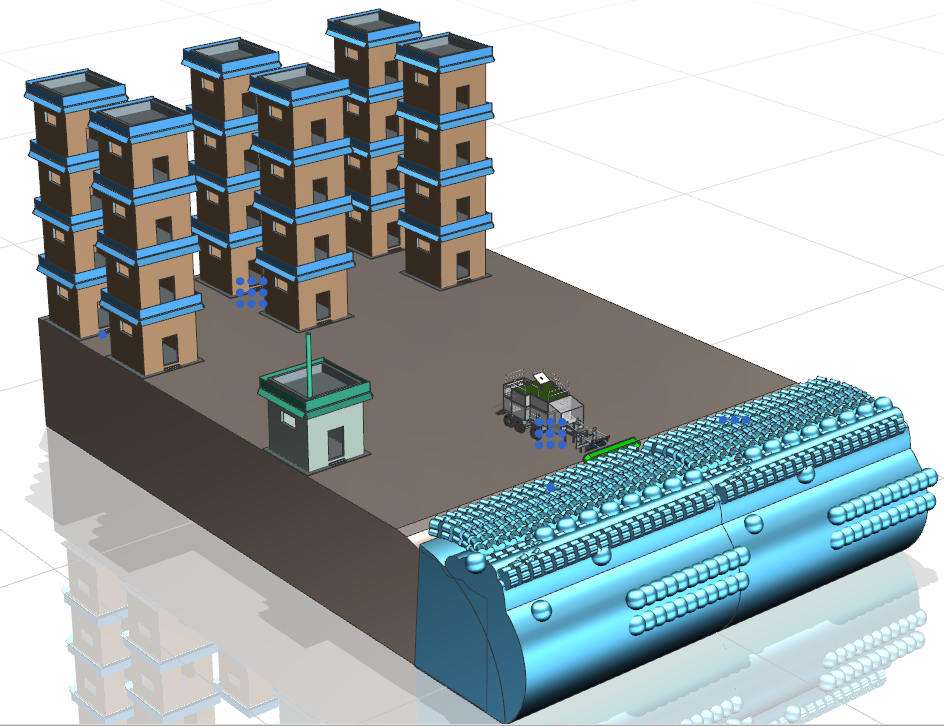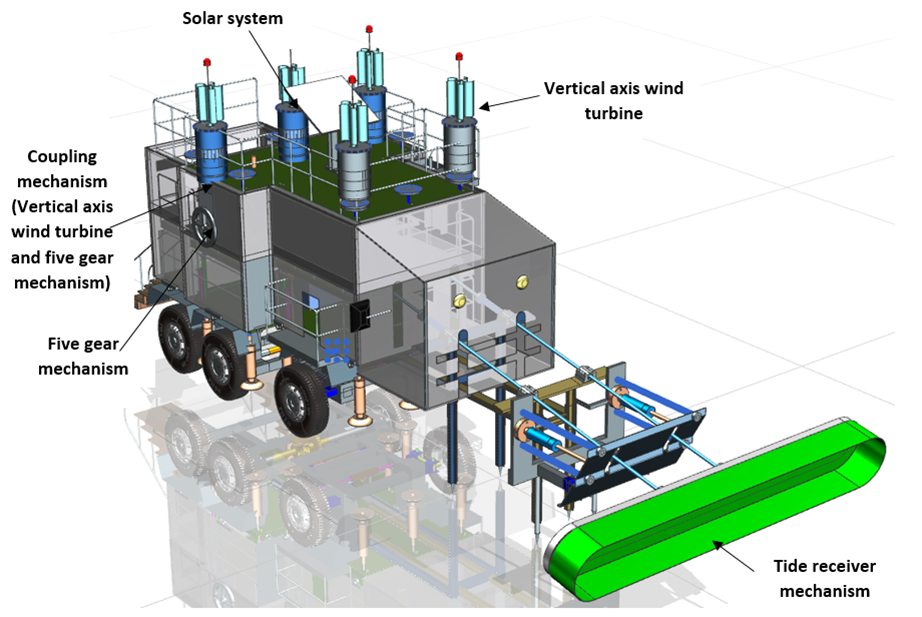Special Service and Features
IIT Madras Researchers patent ‘Combined Power Generation Technology’ that can generate Electricity from both Tidal & Wind sources
The current innovation is an energy converter system that generates electricity in coastal areas to reduce electricity consumption
Posted On:
13 OCT 2023 1:21PM by PIB Chennai
Indian Institute of Technology Madras (IIT Madras) Researchers have patented a ‘Combined Power Generation Technology’ technology that can generate electricity from both Tidal and Wind sources. This can be deployed as a mobile vehicle For Power Generation, Transmission and Storage.
The current innovation is an energy converter system that generates electricity in coastal areas to reduce electricity demand. The converter system can be deployed depending on the power requirements in the coastal area.
At present, the Researchers are focused on scalability and affordability and are trying to build a cost-effective prototype using 3D-Printing and other technologies.
A wind turbine mounted on a vehicle’s roof will employ the converter technology to generate wind energy as well as convert tidal energy into electrical energy. The energy output of the system or gadget is entirely renewable and sustainable. The roof-mounted solar panel could also be used to power other equipment on mobile vehicles.
This Research was undertaken by Mr. Sadham Usean Ramasamy, PhD Research Scholar, Department of Mechanical Engineering, IIT Madras, and Prof. A. Seshadri Sekhar, a former Head, Department of Mechanical Engineering, IIT Madras, who is currently on deputation to IIT Palakkad as its Director.
Initially, Mr. Sadham Usean Ramasamy joined under (late) Prof. BVSSS Prasad for his PhD by Jan 2020. Currently, He is working under the guidance’s of Prof. Shilgram Tiwari and Prof. Shyama Prasad Das through the ANSYS Fellowship. Current guides are not involved in this research work.
Elaborating on the key aspects of this innovation, Prof. A. Seshadri Sekhar, a former Head, Department of Mechanical Engineering, IIT Madras, who is currently on deputation to IIT Palakkad as its Director, said, “The current invention creates electricity using only one vertical axis wind turbine, a horizontal converter mechanism, and no hydraulic set generator based on pendulum support. The current converter also has a variety of height adjustable guider support mechanisms to help regulate the height of the elliptical plate attached to the main shaft. The current idea, on the other hand, lacks a horizontal axis turbine and is entirely onshore, therefore there is no severe corrosion problem.
Furthermore, without the need for a submarine connection, the generated electricity can be easily delivered from the transformer It also has fewer operating expenses, requires less maintenance, and produces clean energy. It can also be used as a moving vehicle. Tidal energy is a clean, sustainable energy source with significant potential and the unusual capacity to be totally predictable.”
Commenting on a timeline for possible field deployment of this unique technology, Prof. A. Seshadri Sekhar said The converter system may need to be relocated depending on the power demand in the coastal area. The system's or gadget's energy output is fully renewable. The solar panel on the roof is also used to power other equipment on mobile vehicles.”
NOVELTY OF THIS TECHNOLOGY
The following mechanisms are unique to the current technology and have specialised features: spring-assisted mechanism, adjustable guider structural support mechanism, main shaft with five converter gear shaft mechanisms, direction converter gear mechanism, floor level adjustable mechanism, and gear coupling mechanism.
Highlighting the novel aspects, Mr. Sadham Usean Ramasamy, PhD Research Scholar, Department of Mechanical Engineering, IIT Madras, said, “This technology will potentially entail fewer expenditures, require less maintenance and produce clean and sustainable energy.
The technology developed by IIT Madras researchers envisages locating the entire converter onshore. Hence, there would be no major corrosion issues. Additionally, the converter is a remote-based system that can be moved to any location based on wave height as well as power generation requirements.


***
(Release ID: 1967314)
Visitor Counter : 855